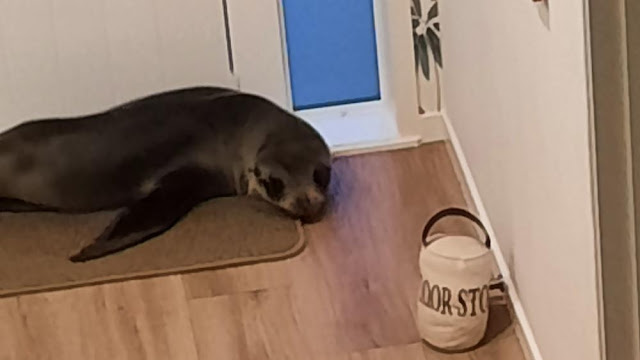‘I Really Missed My Time To Shine’: Marine Biologist Regrets Being Absent When Seal Breaks Into New Zealand Home To Traumatize Pet Cat
A marine biologist has said it was unfortunate he was the only one not home at a time when a curious seal broke into their New Zealand apartment to harass the resident cat.
Phil Ross of Mt Maunganui, said: “The big joke is that this is really the only family emergency where it would be useful to have a marine biologist in the house.” “I really missed my time to shine.”
The marine biologist was reacting to an incident in which a young seal found its way into their home, which is about 150m from the shore, hanging about in the hallway for a couple of hours while the children slept upstairs.
Ross said his wife, Jenn, rose just before 6am on Wednesday to go to the gym.
“As she got in the car, something barked from underneath and shuffled away. She thought it was someone’s dog … and didn’t really think too much of it.”
She returned around 7am, opening the door to find “a cute little seal”.
“It got a bit of a fright and humped its way down the hallway into the spare room.”
Ross said the seal had managed to make its way through two catflaps to get into the home. He believes it had encountered the family’s territorial cat, Coco, outside, just after Jenn had left the property, and had likely been inside for an hour.
“The cat would have gone to defend its territory and obviously the seal wasn’t as intimidated as some dogs are, so Coco must have bolted around the side of the house, into the catflap, and the seal must have followed her.”
Jenn woke their two children, Noah, 12, and Ari, 10, to come and see “their new pet”.
“They thought it was cool and pretty exciting but were totally oblivious to the fact that … not many of their mates would have seals come to visit them in their houses.”
The seal spent time in the spare room and on the couch before Jenn managed to usher it out the front door and into the garden. A Department of Conservation ranger turned up at 10am to take the seal back to the sea, after a busy morning of seal-related call-outs.
The seal, which the family nicknamed “Oscar” in a long tradition of giving seals that name in the community, proved to be polite company, Ross said, and thankfully had not defecated inside. “I think that would have been pretty terminal for the furniture.”
Meanwhile, Coco the cat had scarpered to the neighbour’s house. On returning to its own home, it refused to go downstairs because it was “clearly pretty traumatised”.
Ross said it was not unusual to see young seals roaming about in the area at this time of year, because the young ones were beginning to wean and head out on their own.
“I guess, like all teenagers, they don’t necessarily make sensible decisions.”
The New Zealand fur seal population is making a comeback and recolonising much of their former range. As cute as they may be, seals can move quickly and can inflict serious injuries if they feel threatened. They also carry infectious diseases.
The Department of Conservation recommends staying at least 20 metres away, to not make loud noises in their presence and to keep dogs and children well out of their way.



Comments
Post a Comment